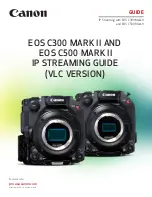
V1.02
Thom Hogan’s Complete Guide to the Nikon D300
Page 401
Two things to notice about that chart. First, I’ve tried to leave
high contrast edges near the center for the camera to “grab”
during focus. This chart isn’t ideal in that respect, but works
okay. In general, you want to avoid very small detail for your
focus target, such as newsprint, as you need something large
enough for an individual focus sensor to grab but not so large
that the sensor sees an area of no detail.
Note: Do not use this (or other) chart at an angle to the camera as
some have suggested. You’ll get more accurate tuning if you
shoot perpendicular to this chart.
But the real interesting thing about using a chart like the one
on the CD is that it tends to generate clear moire patterns
when focus is achieved (less so when using it on LCD
monitors than when using CRTs or printed copies, though). At
least it does if you’re the right distance away from it. I have a
printed ISO focus chart I use when I’m not in a hurry, but
those charts are probably too expensive for most users, and
I’m getting essentially the same results with the quick chart
I’m supplying you.
You also need to have the chart at about the normal distance
you’d be using the lens and the camera not only on a sturdy
support (e.g. a good tripod and head) but also perfectly
oriented perpendicular to the flat chart.
Tip:
Here’s the trick for that last bit: place a mirror on the middle
of the chart. When you can see the camera centered in the
mirror as you line up the chart, you’re perpendicular.
Finally, make sure you’re using the largest aperture on your
lens so that you have the minimum depth of field.
















































